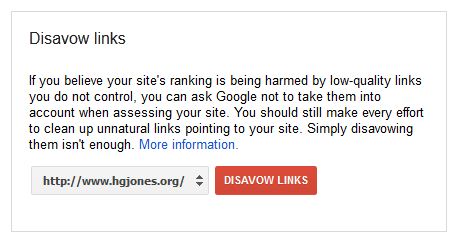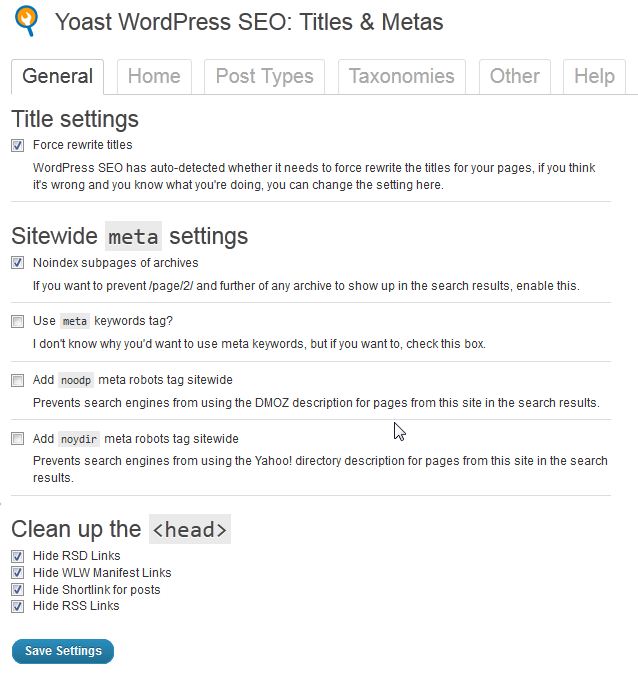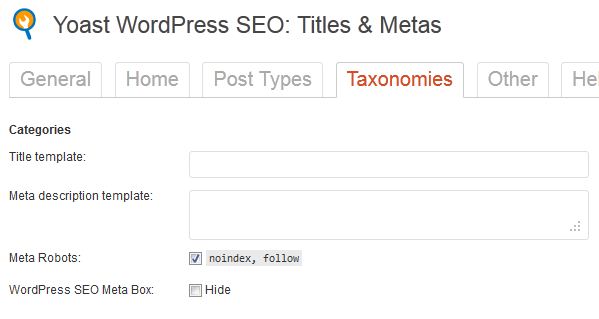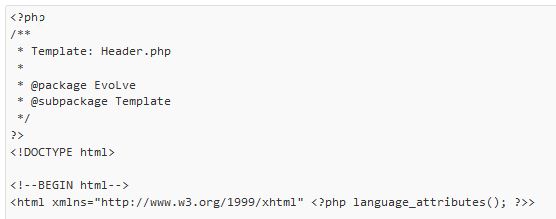Keeping up with Google’s ever-changing algorithm updates on WordPress blogs requires constant monitoring and adjustments, which many webmasters fail to keep up with. Following the Penguin algorithm update, millions of bloggers experienced a halt or decrease in traffic.
Although keeping up with industry trends does require frequent updates to continue performing well in search, most tasks are not time consuming at all. This guide will help you understand recent changes to Google’s algorithm and how to update your WordPress blog to follow the new industry standards.The Penguin and Panda Revolution
The Penguin and Panda algorithm updates targeted low-quality websites full of duplicate content, spammy linking, and poor user experience. WordPress is a wonderful content management system and blogging platform out-of-the-box, but it does create massive amounts of duplicate content.
The days of large scale link exchanges and linking to unrelated, low-quality websites were abruptly ended by the Panda update. In previous years, many bloggers would create low-quality sites with poor internal linking structure, few quality pages and banner ads taking up majority of the pages, which was halted by Penguin. Many bloggers, especially personal bloggers, were left wondering what to do and how to monetize their blogs.
Link Building for Blogs in the Post-Penguin World
Sure, the days of quick and easy links are over, but this doesn’t mean there is any less value to link building. In fact, high-quality, relevant links are valued more than ever. Before building new links, it is imperative to go back and fix your current link profile. Start out by pulling a backlink report of your website. Sift through each of the results, identifying any low-quality or irrelevant links. Contact each webmaster to remove the links. If you cannot find contact information or the webmaster refuses to remove the links, consider using Google’s new disavow links tool.
Now that you have removed all low-quality links pointing to your website, take a look at who you are linking to. Many personal bloggers sell text link ads and sponsored posts for extra income. These days are nearing their demise. Your PageRank is not only determined by inbound links, but also outbound links.
Unless implicitly stated by the advertiser, I would highly recommend adding the NoFollow attribute to any paid links on your website. Let’s say you own a travel blog, and a travel company purchased a sponsored post from you with the anchor text “cheap holiday travel packages.” You would change the markup for the link to look like this:
cheap holiday travel packagesThis will remove any value passed on from your website to the advertiser, and will help your website conform to Google’s webmaster quality guidelines for link schemes.
Fear not, your blog can still be monetized. Consider signing up for Google’s display advertising network: AdSense. Offering display advertising options is the safest way to continue monetizing blogs. After all, Google wouldn’t offer it if it would hurt websites. Be careful not to overdo it with the display ads.
Websites with 50 percent or more advertisement saturation will be penalized, so placement and ad quality will be key to allowing effective ads that will make you money. Consider looking into conversion optimization and a/b testing to find which ads perform best in different spots on your website, and be sure to filter the types of ads that can be displayed so they are relevant to your audience. YouTube videos can also be monetized, so consider starting a YouTube channel and incorporate video into your blog.
Although most link building practices have been blacklisted by Google, there are still many ways to build links to blogs. Instead of exchanging links on lengthy links pages, consider exchanging guest posts with highly relevant blogs. Write high-quality, enticing content that other websites will want to reference with links. Sign up for Google Plus and set up Authorship.
Look for websites containing recommended blog lists relevant to yours, and inquire about getting listed. Review products within your industry, and use social media to let those companies know you reviewed their products. They may include your review in their list of testimonials. Attend or exhibit at industry events which list attendees on the event’s website with links. Become a thought leader in your niche by creating and promoting linkable assets like white papers, guides, videos, ebooks, and best practices.
Setting up Your Blog for SEO
Optimizing WordPress blogs requires a few plugins and configurations to meet today’s industry standards. Start off by downloading and installing a plugin called WordPress SEO. This is the best SEO plugin available for WordPress, and it has an import feature to import any settings from other SEO plugins.
Download and activate another plugin called W3 Total Cache. This is the best caching plugin available, and works in unison with WordPress SEO. W3 Total Cache will help decrease page loading speeds by creating a cache of each page. Any time you mark a comment as spam, save a draft of a post, or click off the page editor, WP creates a duplicate copy of those pages.
Using the WP-Optimize plugin will purge all those unnecessary copies, which will save server space and speed up your website. WP-PageNavi is another must-have plugin for optimizing your pagination by adding the rel=prev and rel=next attributes. This will help your website be indexed more efficiently and increase crawl depth.
Once all those plugins are installed and activated, you will need to configure them. Use the WordPress SEO plugin to set up Google and Bing Webmaster Tools from the “Dashboard” menu on the plugin settings. Next, go to the Titles &Metas menu. On the General tab, check the box to force rewrite of titles if your custom title tags are not showing up. Check the box to Noindex subpages of archives. Check all four boxes to clean up the head by hiding RSD links, WLW manifest links, shortlinks, and RSS links.
On the Home tab, write a custom title tag and meta description for your homepage. You will also want to go through all pages and posts on your site and write custom titles and descriptions for each using the post editor. Enter in the URL of your blog’s G+ brand page in the Google Publisher Page field. This will set up the rel=publisher attribute for your homepage and connect your blog to your G+ page.
Once all those options are set up, go to the Taxonomies tab. WordPress creates massive amounts of duplicate content through taxonomies. Every time a category, tag, date, or author archive page is indexed, it creates a duplicate copy of each of those posts.
Check the box to noindex, follow the categories, tags, and format. Go to the Other tab and noindex, follow the author archives and date archives. Don’t worry about crawl depth from doing this. As long as you have optimized pagination set up through the WP-PageNavi plugin, your website will still be crawled effectively. I recently ran an experiment on noindexing taxonomies in WordPress to test this theory out.
Next, go to the XML Sitemaps menu in the WordPress SEO plugin. Check the box to enable XML sitemap functionality, and submit your sitemaps in Google and Bing Webmaster tools. Check the boxes to ping Yahoo! and Ask.com. Check the box to exclude taxonomies for categories, tags, and format.
Now go to the Permalinks menu and check the boxes to strip category bases and remove ?replytocom variables. You will also want to go to the WordPresspermalink settings and strip categories and datestamps out as well. On the Internal Links menu, check to enable breadcrumbs and implement breadcrumbs on your posts. A snippet of code will be provided in the plugin.
Setting up G+ Authorship
Setting up Google Plus authorship is very quick and easy on WordPress sites. Download and install a plugin called Google Author Link. Under the settings menu for the Google Author Link plugin, select an author for the homepage of your website. Now go to the Users menu in the WP dashboard and edit each user’s profile. Add in the URL to each author’s G+ profile. Next, ask each author to add a URL to your website on the “Contributor To” section of their G+ profile. Authorship is now set up on your blog.
Setting up Microdata
Microdata is still a relatively new concept, first introduced with HTML5. Schema.org is a joint project by Google, Yahoo and Bing to help webmasters mark up their websites so search engines can better understand their content. Bing and Yahoo give a boost in rankings just for setting it up while Google changes the appearance of your listings in search engine result pages to increase clickability.
Before setting up microdata, you will need to change the doctype of your website to the HTML5 format. To do this, go to Appearance>Editor. Select the header.php file. At the very top of the header.php file, you will see a doctype. If it is not already in HTML5 format, change the doctype to <pre><code><!DOCTYPE html></code></pre>. After updating the file, check your website to make sure this did not cause any compatibility issues.
Now that your website is HTML5 compatible, you will need to download and install a plugin called Schema Creator by Raven. Once activated, the plugin will automatically add schema.org microdata throughout your website.
Setting up microdata is as simple as that. If you would like to add in more microdata, go to your post editor or page editor, and you will notice a small icon with the letters “SC” in it at the top of the editor. This tool will allow you to add in microdata for people, products, events, organizations, movies, books, and reviews. It will create a short code and place it within the page for you.
A Few More Quick Tips
Now that your website conforms to today’s Google algorithm standards, there are a few other simple maintenance activities to keep in mind:
Always update your version of WordPress and all plugins as soon as updates are available. If you fail to keep up with updating plugins and versions, you may run into compatibility issues later down the road that will break your website.
Also, make an effort to publish new content at least once per month. Google loves fresh content, and favors websites that are updated frequently. If you get lazy about posting regularly, your traffic and rankings will suffer.
One final piece of advice is to monitor your analytics and webmaster tool accounts at least once per month. This will help you monitor technical issues that may arise as well as traffic drops. If you notice any abnormalities or receive warning messages in webmaster tools, act on these issues in a timely fashion.
Tag Archives: Katonah Luxury Homes
Tips for Gen X and Gen Y Home Buyers | Katonah Realtor
According to a recent survey, people who belong to the Generation X and Generation Y demographics haven’t been deterred by the housing market downturn at all.
A Better Homes and Gardens Real Estate survey found that 75 percent of Gen X and Y respondents believe owning a home is a key indicator of success; 69 percent said the recent housing downturn made them more knowledgeable about homeownership than their parents were at their age.
And it turns out that Gen X-ers and Y-ers are more motivated than some older generations give them credit for. The survey revealed that Gen X-ers and Gen Y-ers are willing to take second jobs (40 percent said they would) or move in with their parents (23 percent) in order to buy into the American Dream of owning a home.
The real estate market during the past five years was certainly scary, especially for younger and less experienced home buyers. And so, a lot of people in Gen X and Gen Y sat on the sidelines. But the market has definitely bounced back, and many believe that now is a great time to buy. You just have to be savvy about it.
Here are five tips to help Gen X-ers and Gen Y-ers buy into the American Dream.
Have a five-year plan
Unlike the boom years, don’t assume a home purchased today will appreciate in value within five years. If you’re unsure about your five-year plans, it’s better to rent.
Use technology creatively
It’s well-documented that Gen X-ers and Gen Y-ers start their home search online. Real estate listings sites, mortgage calculators and valuation tools such as Zillow’s Zestimate® home value are typically places a buyer starts. But, once you’re in the market, there are tons of online resources. Less obvious tools, such as Google Street View, can help, too. It once helped a client realize that the home she wanted to buy in San Francisco’s Hayes Valley neighborhood may not be as safe as she thought. Google Street View revealed that there were previously bars on the windows of the ground-floor apartment.
Beware of information overload
Using the Internet and apps, home buyers today have an unprecedented amount of data available. Sometimes, however, it’s too much and can cause the buyer to shoot themselves in the foot. For example, a buyer might learn that the seller stands to make a 10 percent profit in a short amount of time. Even though the profit is in line with current market values, that information might cause the buyer to make a low offer and kick themselves a month later for missing out on a great house.
Don’t assume you don’t need a real estate agent
Because so much information is online, many Gen X-ers and Gen Y-ers might think they can buy a home on their own. However, the role of the agent is no longer about finding the listings. It’s about presenting the offer and getting it accepted, getting through inspections and getting the deal done. A real estate transaction can go 50 different ways now. A good agent will steer a buyer on the right path. A savvy agent will know the ins and outs of any local market better than an uninformed buyer with a full-time job and family. It’s their business to be in the know, and it’s what they do all day long. Experienced agents will have a strong network in the local market that can give you the added edge. Good agents like to work with other good agents. Finally, keep in mind that a listing agent might not even consider working with an unrepresented buyer.
Look for opportunities to increase the home’s value
Baby boomers and preceding generations could more or less count on staying in their homes for many years and, in turn, their homes’ steady increase in value over time. After the market downturn, however, that’s not the case. Because they’re so mobile, Gen X-ers and Gen Y-ers in particular should steer clear of buying the best home on the best block. Instead, look for ways to add value. Look at homes that don’t show well, are marketed poorly or are outdated. Don’t be afraid of doing light remodeling or making smart improvements that will add value. If you have to sell your home sooner than you’d planned, you’re covered.
California Foreclosure laws go into effect | Katonah Real Estate
Hundreds of new laws take effect Tuesday• From high-speed rail to pipeline safety to foreclosure protections
• “Will give Californians a fair opportunity to stay in their homes”
The fruits of a year of work by legislators are harvested by constituents beginning Tuesday with some 800 new laws kicking in as the New Year rings in.
Among the new laws that could have immediate impact on the Central Valley, epicenter of the nation’s foreclosure crisis, is the package of legislation that extends key mortgage and foreclosure protections to California homeowners and borrowers.
Dubbed the California Homeowner Bill of Rights, the new laws restrict dual-track foreclosures, guarantee struggling homeowners a reliable point of contact at their lender and impose civil penalties on fraudulently signed mortgage documents. In addition, homeowners may require loan servicers to document their right to foreclose.
“For too long, struggling homeowners in California have been denied fairness and transparency when dealing with their lending institutions,” says Attorney General Kamala Harris, who pushed for the new laws. “These laws give homeowners new rights as they work through the foreclosure process and will give Californians a fair opportunity to stay in their homes.”
Other new laws include:
• Another new law impacts the California High-Speed Rail project, due to start construction first in the Central Valley.
It requires the High-Speed Rail Authority to encourage purchasing high-speed train rolling stock and equipment made in California consistent with federal and state law and continued investment in California businesses.
• Natural-gas pipeline safety upgrades are required by several new laws. One requires disclosure of gas transmission lines when a home is sold, another forces the Public Utilities Commission to finally answer the recommendations of the National Transportation Safety Board’s investigation of the San Bruno pipeline blast that killed eight people and leveled a residential neighborhood.
• Women who breast-feed their children will be protected from harassment by their employers. A new law puts breast-feeding under the scope of the Fair Employment and Housing Act.
• Another business-related law says that employees and former employees have the right to obtain copies of their personnel records. Businesses will have to provide them within 30 days.
• Employers and higher-education officials will now be banned from asking for applicants’ social-media user names and passwords.
• Another law lurches California into step with much of the rest of the world by allowing juveniles who have been sentenced to life without parole the opportunity to petition for a new sentence of 25 years to life. The United States is the only country in the world that sentences children to life in prison without the possibility of parole. According to state Sen. Leland Yee, D-San Francisco, the author of the new law, California has over 300 youth serving this sentence and who without SB 9 would have died in prison without any chance to earn release.
• SB 1001 increases fees required of registered lobbyists, ballot measure committees, and independent expenditure committees, in order to finance the maintenance of the state campaign and lobbying database known as Cal-Access, which keeps the public informed as to who is influencing their elected officials.
Fannie Mae announces new deed-in-lieu requirements | Katonah NY Real Estate
8 states where ‘repair and deduct’ could spark eviction | Katonah Real Estate
Q: Our landlord has refused to fix our heater, despite our repeated requests. We’d fix it ourselves, but we can’t afford it. In fact, we’re down to one income and are behind in the rent. The landlord says if we fix it ourselves and deduct the cost from our rent bill, he’ll evict us. Is this legal? –Dale and Candace
A: In every state but Arkansas, residential landlords are required to offer and maintain fit and habitable housing. While a handful limit the guarantee to certain types of tenancies (excluding portions of the guarantee for single-family dwellings, for example), most simply extend the warranty to all tenancies. But that doesn’t mean that all tenants, at every moment, can call upon its protections.
In fact, at least eight states condition a tenant’s right to get action from the landlord on the tenant not being delinquent in rent at the time the tenant gives notice to the landlord of the problem. In Delaware, Massachusetts, Missouri, Nevada, New Hampshire, Texas, West Virginia and Wyoming, tenants cannot avail themselves of some typical remedies — withholding the rent, using “repair and deduct,” or moving out without liability for rent — unless they’re current in the rent.
The policy behind this rule is pretty straightforward — it’s to discourage tenants from staying rent-free while they manufacture habitability problems and fight an eviction. Although the vast majority of tenants do not engage in such behavior, publicized stories of “tenants from hell” who manage to stay in the property while the landlord spends time and money trying to evict them have gotten legislators’ attention.
You’ll need to find out where your state stands on the issue, before you can confidently fix the heater and lower your rent obligation. If you live in one of the states mentioned above, your landlord may indeed have grounds to punish your exercise of a remedy that would otherwise be available to you.
Q: I’ve just learned that one of my tenants was arrested for assault last week. The incident took place in a city park. Can I terminate the tenancy on this basis? –Andre Z.
A: Several states have laws that allow landlords to terminate tenancies when the tenant has committed certain illegal acts. (Many states also allow for termination when there’s an act of domestic violence, but that’s not exactly what you’re asking about.) These laws vary considerably when it comes to what kinds of acts will justify a termination, and how much proof is needed by the landlord.
It’s most common for states to allow termination when the acts affect the health or safety of other residents or tenants. For example, Iowa’s provision targets acts that threaten the safety of the landlord, landlord’s employee, other tenants, or anyone within 1,000 feet of the property. (Iowa Code Section 562A.27A.)
But not all states are similarly limiting — in Tennessee, for example, the landlord can terminate if the tenant “willfully or intentionally commits a violent act,” no matter where it might have occurred. (Tenn. Code Section 66-28-517.)
So you’ll need to check your state law to see whether it gives you the right to terminate under the circumstances. You’ll also need to find out whether the tenant must be convicted of the offense first, or whether you can terminate based on the arrest alone.
The greatest real estate technology ever | Katonah Real Estate
Viral Videos: How to Create and Promote Videos People Love | Katonah Realtor
How Facebook’s New Sound Notifications Could Boost Engagement | Katonah NY Real Estate
Obama’s Housing Policy: Fix Is Crucial To President’s Economic Legacy | Katonah NY Real Estate
President Barack Obama secured reelection while managing to talk around one area of economic policy in which experts frequently charge him with failure: managing the national housing crisis.
In a campaign dominated by talk of joblessness and what to do about it, the president hardly mentioned the epidemic of foreclosures, the fact that roughly one-fifth of all homeowners with mortgages owe the bank more than their properties are worth, or the uncomfortable reality that the American housing market is now largely propped up by taxpayers via public control of the mortgage finance giants Fannie Mae and Freddie Mac.
But while ignoring these issues was apparently a successful electoral strategy — Obama carried most of the “Foreclosure Belt” states, including California, Nevada, Colorado and Florida — that option is unlikely to be available to the president as he begins his second term. The stakes are high. Some experts see Obama’s ability to rejuvenate the housing market as directly influencing his legacy as a failed or successful steward of the American economy.
“There are very important questions left unresolved regarding the future of the housing finance system,” said Julia Gordon, the director of housing policy at the Center for American Progress, a left-leaning think tank. “The answers matter not just for the housing market but for the future of economic growth and the future of the middle class.”
Gordon and other housing experts say they expect that with the market stabilized — prices have ticked up 3.5 percent since the market bottomed out in October of last year — the administration will turn to the biggest unresolved housing conundrum: what to do with Fannie Mae and Freddie Mac, wards of the state since a bailout in 2008 that has cost $188 billion.
After the bailout, Congress created a new regulator-overlord, the Federal Housing Finance Agency, to limit further losses and get taxpayers off the hook. The financial bleeding has stopped, but Fannie and Freddie now hold even greater sway than before. Along with the Federal Housing Administration, which backs riskier loans, Fannie and Freddie own or insure more than 90 percent of all new loans made in the United States. In short: they are the mortgage market.
So what comes next? For a while, many Republicans clamored for rapid elimination of the companies, but the prospect of no housing finance system at all seems to have cooled their ardor, though Fannie and Freddie remain popular punching bags. Obama’s win all but guarantees some level of government support going forward, even if Fannie and Freddie don’t survive.
“There is a clear understanding that the government has to play a role in the mortgage finance system,” said Mark Zandi, chief economist at Moody’s Analytics. “Without that support, the 30-year fixed-rate mortgage, the mainstay of the system, can’t exist.”
Given the stark ideological differences between the president and a severely conservative House of Representatives, and the looming fiscal cliff that will dominate everyone’s attention for the rest of this year, a permanent fix to the Fannie and Freddie problem is probably still far off. In the meantime, the advocates for partial debt forgiveness, or principal reduction, for underwater homeowners will be watching closely to see what becomes of the enemy within: Edward DeMarco, a conservative career bureaucrat who has held the “temporary” job of acting director of the Federal Housing Finance Agency for three years.
DeMarco, in the past year, has resisted intense pressure from the Obama administration to allow principal reduction on Fannie and Freddie loans, even when a private bank or another arm of the federal government would foot the bill.
Debt forgiveness, when combined with other relief, such as a lower interest rate, can bring monthly mortgage payments down dramatically. A study by DeMarco’s own agency found that targeted principal reduction could save taxpayers as much as $1 billion.
Stan Humphries, the chief economist at Zillow, recently told The Huffington Post that the large supply of underwater homes means that fewer are on the market at any given time. As a result, despite the high foreclosure rate, inventory in many areas is actually very tight. Humphries compared it to a stock with few available shares for trade, a situation that can lead to price volatility and continued disruption in the housing market — and in the economy.
DeMarco, though, has said that bailing out homeowners poses a “moral hazard” that could encourage homeowners still current on their loans to intentionally default in order to cash in on the aid. His obstinance has delighted Senate Republicans, and all but ensures that the Senate will kill any nominee Obama puts forward to replace him as head of the agency.
Recently, some have speculated that Obama will fire DeMarco, though that course poses its own challenges. DeMarco is a bureaucrat, not a political appointee, and would need to be fired for cause. Moreover, those who work under him, and would be next in line to replace him as acting director, share his views, according to two sources familiar with the inner workings of the agency.
For all his power, it isn’t clear whether replacing DeMarco with an administration loyalist would move the scale much for underwater borrowers hoping to see some of their debt slashed. Banks pledged to spend at least $10 billion earlier this year as part of the national mortgage settlement to write down the debt on some of these loans.
By the time a replacement for DeMarco is found, there might not be much left for borrowers with Fannie or Freddie loans. Moreover, there doesn’t seem to be much inclination within the administration to use any of the $40 billion or so in unspent dollars from the Troubled Asset Relief Program that was pledged for housing support to jumpstart a new underwater relief program.
Instead, administration is promoting a bill before Congress that would expand its existing refinance program.
Still, housing advocates want to see DeMarco gone. One of their biggest beefs is that thanks to his effort to save every penny for taxpayers, Fannie and Freddie have abandoned their mission to provide broader access to the housing market for middle and low-income borrowers.
Under DeMarco, the two companies have tightened lending standards to exclude all but those with the very best credit from participating. The average Fannie Mae borrower credit score from 2001 to 2004 was 718, a few points less than the median credit score of all U.S. consumers. By 2011, the average score had soared to 762, which is at the very top end of the range and is considered “excellent” by the rating services.
This means far fewer people are qualifying for a Fannie or Freddie mortgage, and even those who do qualify report long waits for approval. The United States doesn’t need another housing bubble, but it needs a system that allows financing for people with the ability to repay what was borrowed, said John Taylor, president of the National Community Reinvestment Coalition, a group that advocates for low-income borrowers. That’s good for families and good for the economy, he said.
For more than 70 years, since Fannie Mae was established during the Great Depression, it and its later-arriving cousin Freddie Mac provided this vital role, Taylor said. It wasn’t until they tried to catch up with the Wall Street subprime machine that they went off course, he said. A readjustment given the horror of the housing crash makes sense, he said, “but the pendulum has swung too far.”
5 Reasons Why Do-it-Yourself Marketing Can Actually Hurt Your Business | Katonah NY Homes
Entrepreneurs, by nature, are do-it-yourself people. Not a bad thing. While that trait may serve you in many areas there’s one where it actually works against you: Marketing. Here’s five reasons why.
1) You Don’t Know What You Don’t Know.
While you might feel savvy after reading a couple marketing books or listening to a savvy marketing guru, it doesn’t compare to working with a qualified team or consultant with great experience and a great record. You simply don’t know what you don’t know, and if you do it yourself, what you don’t know will hurt you. Like having a tag-line that makes no sense, or sends a wrong message. Like pouring money into SEO or your website when the better focus is Content Marketing and improved organic search. Like not realizing you need video. Or having a self-produced video that’s so unprofessional it works against you. The list goes on.
2) A Business Owner Can’t Be Objective.
Passionate business owners tend to be absorbed by their business—an advantage when it comes to DIY marketing, right? Not really. Effective marketing starts with an unbiased perspective. To be successful at marketing, business blemishes must be seen clearly. As a business owner you just don’t have that objectivity. If you read Ken Segall’s book Insanely Simple, about his working with Apple, you’ll read how Steve Jobs was proven wrong time and time again by his more objective and talented outside team who created some of the most iconic and successful marketing ever done.
3) The Best Marketing Isn’t About A System or Formula.
As more small business owners attempt to save money by trying to do their own thing, more self-proclaimed marketing gurus are popping up on the Internet with their “Amazing Profit-Making Marketing” systems. They all sound amazing and they all claim amazing results. They even have amazing testimonials. But every business is different, and a cookie-cutter, systematic approach is not the most effective way to market a business or product. While an “Amazing Profit-Making Marketing System” sounds amazing, the ones making the most money from them are usually the ones getting you to spend money on them.
4) Great Marketing Requires Talent.
Great marketing is part science, part art. Yet, the creative part often gets lost or diminished in this ever-advancing tech world. Focused, creative talent is the ingredient that helps communicate your message and persuade your prospects to buy. It’s not easy to find, but if you do it’ll make a huge difference.
5) DIY Doesn’t Really Save Money.
Because you’re not spending money on outside resources you might think you’re saving tons of money with a DIY approach. Just remember this…it’s not just what you spend, it’s what you spend and get back on what you spend.
Great marketing will get you back more, and sometimes significantly more, than what you spend. So, how do you get great marketing? You find and hire great marketing people, like Steve Jobs did, like Nike’s Phil Knight did, and like every successful business owner does. And, they didn’t just do it when they were big successful companies with huge marketing budgets. They did it from the very beginning of their companies, only months after they incorporated.
You also have to factor in what your time is worth. It’s not cheap. If you kept track of every minute you spent trying to do it yourself and applied a dollar value to that, you’d be surprised at the expense. Also realize that every expensive minute you spend fumbling with something you don’t do great is taking away valuable time and talent from something you do do great. That’s another expense.
To sum up I’ll end with a simple quote from someone who’s interviewed hundreds of small business owners and knows what it takes to be successful:
“Business success is all about finding the right outside service providers and using them wisely. You can’t do it all yourself.” — Anita Campbell, Founder of Small Business Trends














